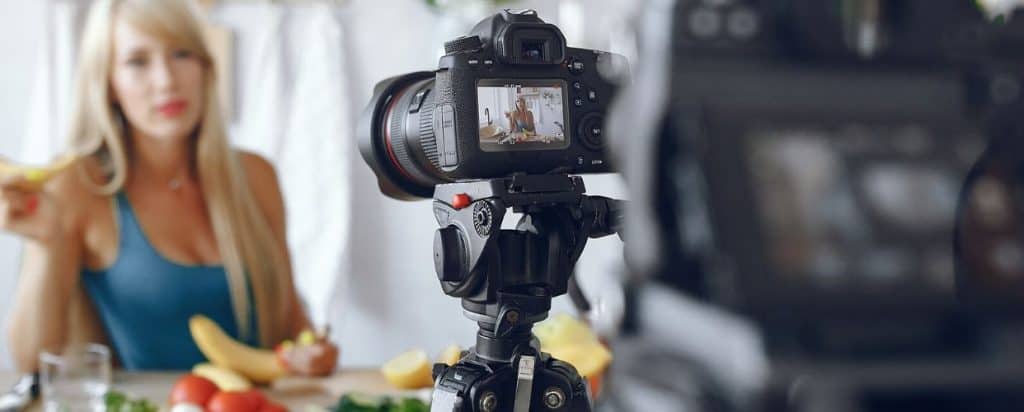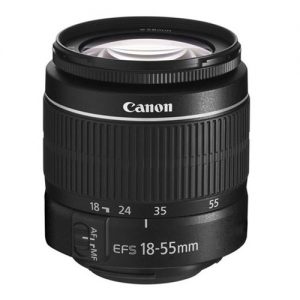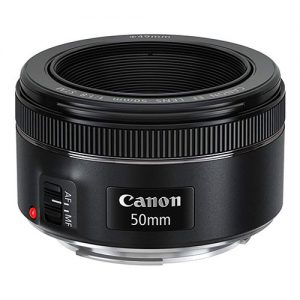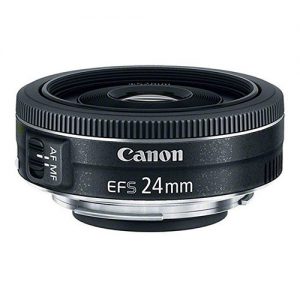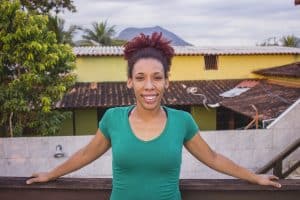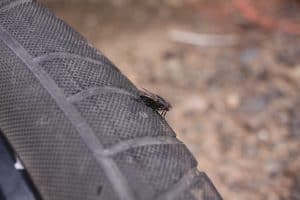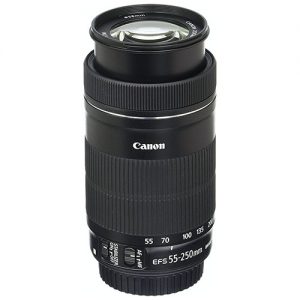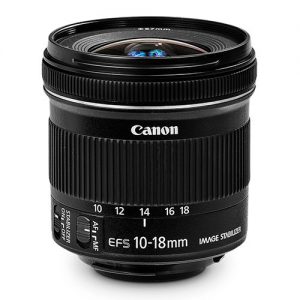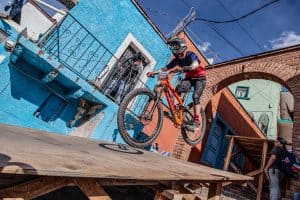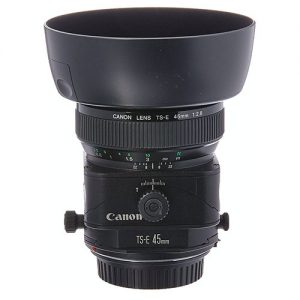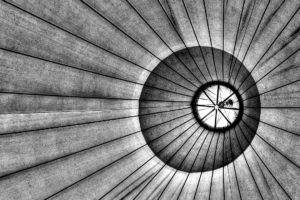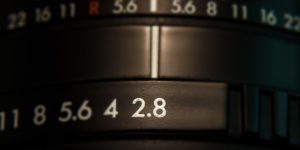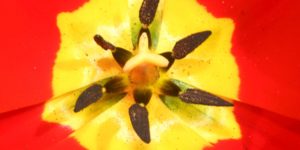If you’re like me and grew up in the Golden Era of Youtube, then you’re no stranger to vlogging.
You also aren’t a stranger to the fact that everyone and their grandmas use Canon cameras for their vlogging needs.
For this article, I selected the 6 best vlogging lenses for EF and EF-S Canon cameras.
As an added bonus, I’ve even listed the most useful focal lengths and different budget ranges for vlogging.
So, follow along as you are guided through the journey of finding the perfect Canon Lenses for your vlogging needs.
Plainly known as the “Kit Lens,” this is most likely the first lens you will ever work with.
I’ve nicknamed it, “Work horse,” because it gets the job done! If you need to zoom in, there’s a zoom feature.
If you need a fake macro, the focal length is pretty dang close. If you don’t have a lot of lighting setup, the f-stop is forgiving.
This is the ultimate lens for any vlogger and shouldn’t be shamed just for its low price.
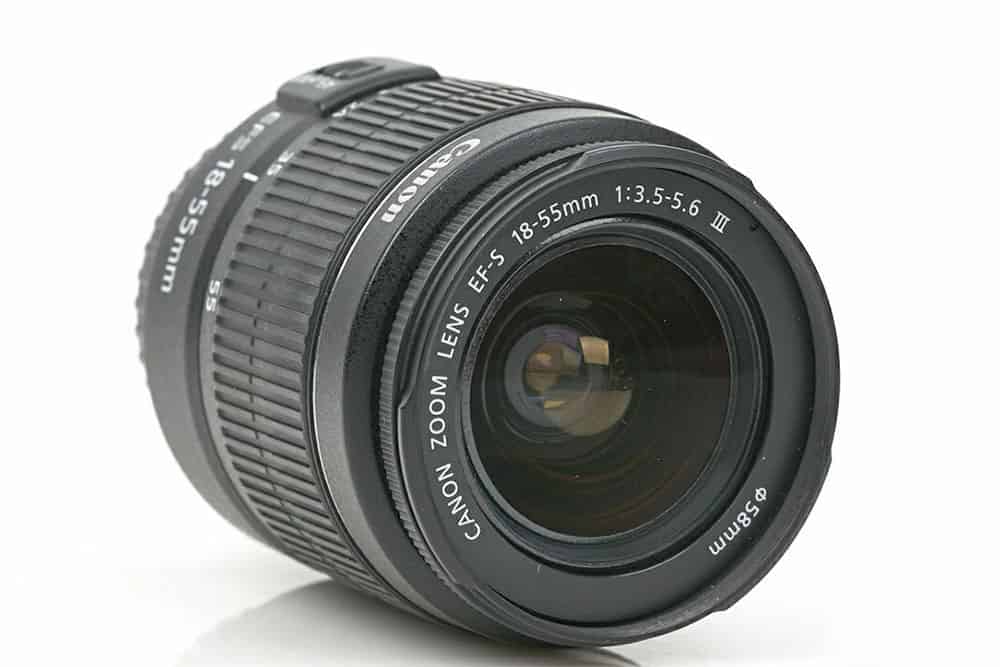
For vlogging needs, this lens will have your back! Sit-down vloggers will enjoy the option to frame however much of their background as they’d like.
Nature vloggers can rejoice in only needing to pack one lens for their impromptu trips. No matter what you’re capturing, there’s a good chance this lens can get the job done.
On top of everything else, this lens is a great learning tool. It forces you to learn how each element of vlogging works.
From manual focus, to physical zooming, to setting the aperture through the camera body itself, you will master the vocabulary needed to carry yourself in the vlogging community. If you’re a first time vlogger, do yourself a favor and start with this lens!
If you’re ready for an upgrade…
All of the praise given, the previous lens has a serious downfall: no stepping motor (STM).
This means pulling focus is LOUD! For that reason, I suggest Canon EF-S 18-55mm f/3.5-5.6 IS STM Zoom Lens. It has all the same features as the Kit Lens, but with the added bonus of STM and image stabilization.
For vloggers, this upgrade is a no brainer. The lens shouldn’t break your budget (around $150), and you’re still getting all the benefits of the kit lens.
I can speak firsthand that the IS on this lens is braggable. I’ve spun around, taken pictures at random, fallen while recording, and the image is still readable.
Let me tell you about this lens. This lens is, without a doubt in my mind, a necessity for any vlogging and picture taking needs.
It’s a compact, prime, macro lens that can drop to a 1.8 aperture setting without causing any grain on the image.
What that means is this lens is designed to take images up close in low light settings without sacrificing quality.
For vlogging needs, this should be your go-to lens whenever you need B-roll, or video that doesn’t serve a purpose to the narrative.
- Shot with this lens
Those Casey Neistat shots where he’s really close to a bug on a leaf or in someone’s eye?
Those types of shots are done with macro lenses. Maybe not specifically this lens, but the Canon EF 50mm STM Lens will get you pretty close.
The price isn’t bad either! Even if you buy the lens with a suped up cleaning kit and filters, you’re only going to be in the $200 range. It really is perfect for first time vloggers, or people who are trying to add something more to their established content without breaking the bank.
If you’re ready for an upgrade…
I would suggest the Canon EF 100mm f/2.8L IS USM Macro Lens.
100mm focal length will allow you to get as close to a subject as you want without losing any inner details with its 0.99ft/0.3m focusing distance.
The reviews for this Canon lens are one of the highest I’ve seen in years.
When talking about the features it has to offer, I would say it’s as close to a film industry 300mm prime lens as you can get for under the $1,000 mark. This thing is a beast!
Ah the Canon EF-S 24mm lens, more commonly known as, “The Pancake Lens.”
I know this lens gets a lot of slack, especially from people who refer to it as, “Baby’s First Wide Angle,” but just hear me out on this one!
This lens is the only wide angle EF-S mount lens I’ve come across that doesn’t fall into the fisheye category.
It won’t distort your image like a fisheye would, even if you get up close to your subject with it.
- Shot with this lens
Depending on your viewpoint, it could be a slight downfall to the fact this lens does not come with an autofocus feature; however, as a STM (stepping motor) focus lens, this transition is smoother than most.
For vlogging needs, this is the perfect lens for anyone trying to start a cooking vlog series. If you’re like me and love Julien Solomita in the kitchen, this is the lens to use to get that look.
It’s wide enough to get your whole kitchen in frame without distortion or losing focus.
If you’re ready for an upgrade…
Let me introduce you to the Canon EF 16-35mm f/4L IS USM Lens.
Yes, it is a wide angle zoom lens, thanks for asking.
Falling right in-between that sweet spot of “ultra wide angle” and “wide angle,” this lens will give you so many more options of what to capture behind you.
I always recommend zoom lenses to anyone who does travel vlogs as you never know what you might see on your adventures.
If you’re serious about it and ready for the upgrade, I highly recommend you add this lens to your vlogging kit.
This beautiful lens has a 9-blade diaphragm…9 blades! You know that bokeh is going to be gorgeous and any sunrise or sunset shots?
Perfect rays of light without heavy editing.
My only real downfall for this upgraded lens is the f-stop. At a disappointing 4.0, you will need a good amount of light to even make out the image when it comes to night shots.
Depending on your Canon camera body, you might be able to sneak out a vlog with a higher ISO setting, but I wouldn’t recommend going beyond 1600.
First and foremost, the “IS” in the title of this lens is not the word “is.” IS stands for “image stabilization” and does this lens deliver on that!
Even if you are zoomed all the way in, the auto IS does a great job at keeping the image still and smooth.
The aperture is about average to most other lenses, but the main upside to this one is the telephoto lens.
If you don’t know, a telephoto lens is a type of camera lens that has a special way the lens takes light and information in.
It flattens the background into the main subject. In other words, it makes something that’s really far away look like it’s closer than what it really is.
Typically telephoto lenses are categorized as such starting at 70mm, but this lens still gives you that flattened image look even at 55mm.
For vlogging purposes, this is the lens you should take with you if you are a traveling vlogger.
You won’t have to worry about switching out lenses every time you want to talk to the camera versus when you want to capture a beautiful cloud.
Thank you zoom feature!
For more traditional vlogging setups, this lens will give your videos a cozy feeling. To the audience, you will appear closer to them and so will your background.
Some may argue that telephoto lenses make the frame feel squished, but I think that aesthetic actually works in a vlogger’s favor.
The whole appeal is that the audience gets to feel like they’re sitting right across from you.
Why wouldn’t you want to have a lens that can capture that feeling?
If you’re ready for an upgrade…
Then please let me direct your attention to the Canon EF 70-300mm f/4-5.6 is II USM Lens.
Fitting snugly in the book-grade definition of a “telephoto lens,” this one starts off at 70mm and zooms to a whopping 300mm!
It’s also able to be mounted between any of Canon’s mounts without loss of image. By far the coolest quality is the digital reader on the lens itself!
You can know exactly how much the IS is processing, focal length, and focal distance.
For vloggers specifically, this lens actually works in your favor as it has Focus by Wire.
This means all the focusing is done internally within the lens; there’s no mechanical movement to shift the focus.
If you’re a vlogger who prefers to let the machines do the focusing (autofocus), this lens has you covered.
My only discretion about the Canon EF 70-300mm is when you have an APS-C sensor. That 70mm shot is going to become 140mm! If that’s the look you’re going for in your vlogs or you need to capture something that’s happening very, VERY far away from you, this lens will be perfect.
However, if you’re the type of vlogger that likes to do face to face stuff, maybe skip this lens.
A classic fisheye can go a long way in giving your vlogs a unique feel.
This is the type of lens you stumble upon and either fall in love with or despise.
That being said, I still think it should be added to your vlogging package.
The lightweight design makes it incredibly easy to shoot with and the polycarbonate body makes it pretty much indestructible.
The f-stop isn’t anything to go home and brag about, but the ultra wide/fisheye focal length definitely is!
And the fact that it’s a zoom lens without leaving the ultra wide category? Amazing.
- Shot with this lens
For your vlogging needs, this is the lens you should go to if you want to stand out from the rest of the crowd.
Especially if you’re a sit-down vlogger, this lens will create a distortion around your face and environment.
This may not be the aesthetic everyone is looking for, but the distortion is only if you get really close to the lens.
For the nature vloggers, this lens should definitely make its way into your kit!
The ultra wide angle allows for a lot of sweeping shots of landscapes.
Like I said before, the lightweight and nearly indestructible build of the lens itself makes it sturdy enough to outlast any weather conditions you may put it under.
I’ve heard a story of someone dropping this lens off the side of a cliff, and it still worked! (Note: I would not test this theory.)
If you’re ready for an upgrade…
Might I suggest the Canon EF-M 22mm f2 STM Compact System Lens.
Ironically, this upgrade may cost you less!
But, It should come as no surprise that the prime lens out performs the zoom lens.
This small-but-powerful compact lens is able to produce fisheye content at a much lower f-stop.
The images are just as crisp, and you can even cheat a macro out of this prime!
I know technically this lens falls outside the parameter of “fisheye,” but I’m still putting it under the fisheye category.
This is because you will still get that distorted look, especially if you’re a sit-down vlogger.
This lens is just for fun! If you’re tired of the same old shots, this tilt shift lens will rock your vlogging world.
Notoriously known as the most difficult lens to work with, the shots that come out of it are phenomenal.
The only way I can describe the videos is if you could create miniature sculptures out of the real world.
For vloggers, this lens is absolutely not beginner friend.
However, you are more than welcome to give your best shot (pun fully intended) in getting the mechanisms lined up just right to create the iconic images.
Manual focus only, this lens will test your skills while delivering on the promise of a one-of-a-kind vlogging experience for your viewers.
Vlogging Lens Guide & FAQ
Alright, you’ve seen my list of Canon lenses for vlogging, but what did anything I just say mean?
What’s a focal length? Why does the f-stop matter? What in the world is an EF mount and why is it different from an EF-S mount?!
Actually, that’s a really great and commonly misunderstood question, so let’s start there.
Canon Mount & Sensor size
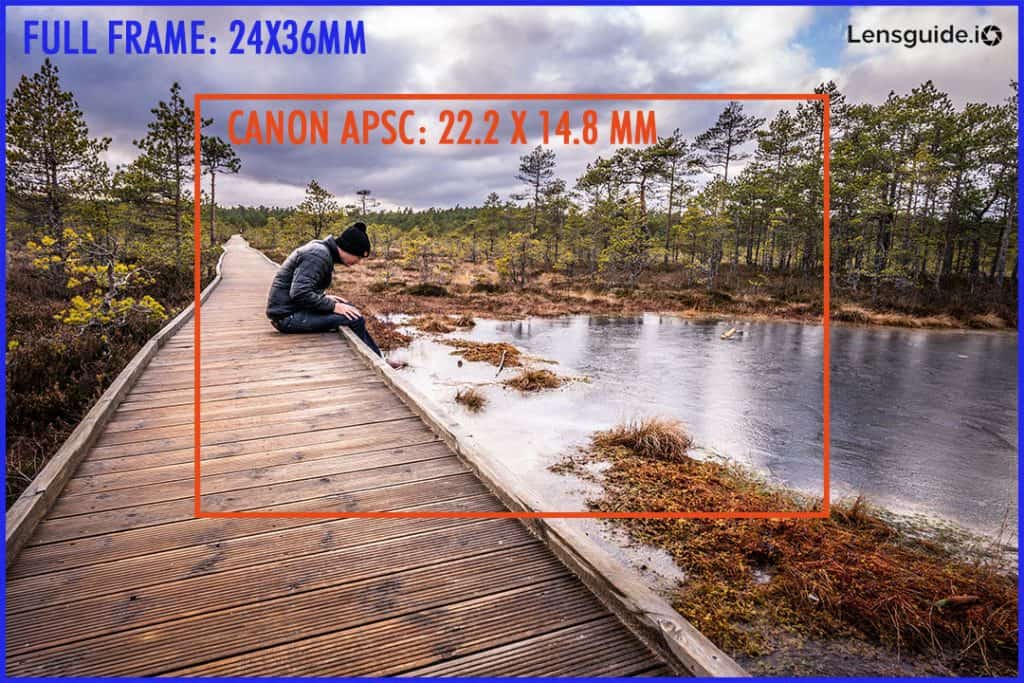
Before I explain the mounts themselves, there’s something very important we have to go over: camera sensors.
In ye olden film times, you would capture a scene by exposing a piece of film to light, burning the image into it.
Nowadays, we do this process digitally with the camera’s built-in sensor.
There are two main types of sensors for Canon DSLRs (and cameras in general):
Full Frame Sensors and Advanced Photo System type-C (or APS-C or even Crop Sensors).
Full Frame Sensors are designed to capture images up to 36mm x 24mm.
These sensors are the equivalent to the frames you would get from old school, physical film.
These sensors capture more image and are usually more expensive.
APS-C are designed to capture images up to 22.3mm x 14.9 mm.
This gives your camera’s sensor a smaller frame of view.
That means it won’t capture as much of the image as a Full Frame Sensor could. For Canon specifically, APS-C sensors “zoom in” on whatever you’re capturing by a rate of 1.6x. This “zoom in” is referred to as a “crop factor.”
For example…
If your lens says it is 50mm, a Full Frame Sensor Canon camera will read the image at 50mm.
That exact same lens will read as an 80mm lens when using an APS-C Sensor Canon camera.
So, what does that have to do with the type of lens mount?
Well, I’m glad you asked from your side of the keyboard!
EF Mount
A Canon EF Mount is a lens designed for Full Frame Sensors.
They’re usually more expensive, but honestly they’re worth it.
They can be interchanged between EF and EF-S mounts without losing the image quality. Of course, when you use it on an APS-C Sensor, you will still get the crop factor.
EF-S Mount
A Canon EF-S Mount lens is designed specifically for Canon APS-C Sensors (if you really want specifics, it’s only for DSLRs).
These types of lenses have a smaller diameter to accommodate the smaller frame of view for the sensor.
This means they technically can sit on an EF Mount, but you will get extreme vignetting (black ring around the image).
However, these lenses are usually cheaper because of their smaller size.
EF-M Mount
The EF-M mount was introduced in 2012 by Canon as a way of compensating for their new, mirrorless camera bodies.
These types of mounts have a smaller diameter but larger focal distance than their EF and EF-S predecessors. There are adaptors for EF-S to EF-M and EF to EF-M, but you don’t really gain any of the benefits of the EF-M, because the adaptor would block the extra space.
Basically, it is another type of mount.
The only real difference and suggestion when it comes to the limited ran EF-M mount lenses is: only use EF-M lenses on EF-M cameras.
List of cameras compatible with the EF-S Mount
The following cameras are compatible with EF-S lenses (source: Canon USA).
- EOS 7D
- EOS 7D Mark II
- EOS 20D
- EOS 20Da
- EOS 30D
- EOS 40D
- EOS 50D
- EOS 60D
- EOS 60Da
- EOS 70D
- EOS 77D
- EOS 80D
- EOS 90D
- EOS 100D/Rebel SL1
- EOS 200D/Rebel SL2
- EOS 250D/Rebel SL3
- EOS 300D/Digital Rebel
- EOS 350D/Digital Rebel XT
- EOS 400D/Digital Rebel XTi
- EOS 450D/Rebel XSi
- EOS 500D/Rebel T1i
- EOS 550D/Rebel T2i
- EOS 600D/Rebel T3i
- EOS 650D/Rebel T4i
- EOS 700D/Rebel T5i
- EOS 750D/Rebel T6i
- EOS 760D/Rebel T6s
- EOS 800D/Rebel T7i
- EOS 1000D/Rebel XS
- EOS 1100D/Rebel T3
- EOS 1200D/Rebel T5
- EOS 1300D/Rebel T6
- EOS 2000D/Rebel T7
- EOS 4000D/Rebel T100
What is Focal Length?
Focal Length is the measurement (in millimeters) from the focal point to the optical center of the lens.
Which is a very “sciency” way of saying: it’s how far your main subject needs to be from the camera in order to be in focus.
Focal length is determined by the thickness and curvature of the lens being used. It’s an important factor in determining what lens will best suit how much of a scene you want to capture.
For example, if you want to vlog the rose buds falling off a tree, you’re going to want a lens with a larger focal length.
I know it sounds backwards, but that’s because the formula used to find focal length is an inverse-relationship function to the object at hand.
In other words, the bigger the focal length, the closer you can get to a subject.
You can find out your Canon lens’ focal length by following the formula:
(1/U) + (1/V) = (1/F)
U = object’s distance
V = image distance
F = focal length
Or by reading the lens! It’ll be the number in millimeters.
What’s an Aperture?
Aperture is the combination of shutter speed and ISO setting. Basically, it’s how much light is being let into the camera’s sensor.
Aperture will have the most impact on how grainy your vlog will look. It is measured in f-stops (1.4, 2.0, 2.8, 4.0, 4.5, 5.6, 6, 8, 12, 22).
The larger your aperture, the more light will be let into your sensor.
So if you’re vlogging at night, you may want to set your aperture at a higher setting.
If you’re vlogging out in pure daylight, you may want to set your aperture at a lower setting.
Also with aperture, it will directly impact your depth of field.
The depth of field determines what is blurry in your video and what’s not. For aperture settings, the larger the aperture is set to, the more blur will be present in your vlog.
If you’re vlogging something that has a lot of movement, you may want to set your aperture to a lower setting.
That all being said, aperture is like focal length; it is opposite to what you think it should be.
A “larger aperture” does not mean the larger number!
For apertures the smaller the number is, the more the sensor is exposed to light. It works like your pupils.
Final words
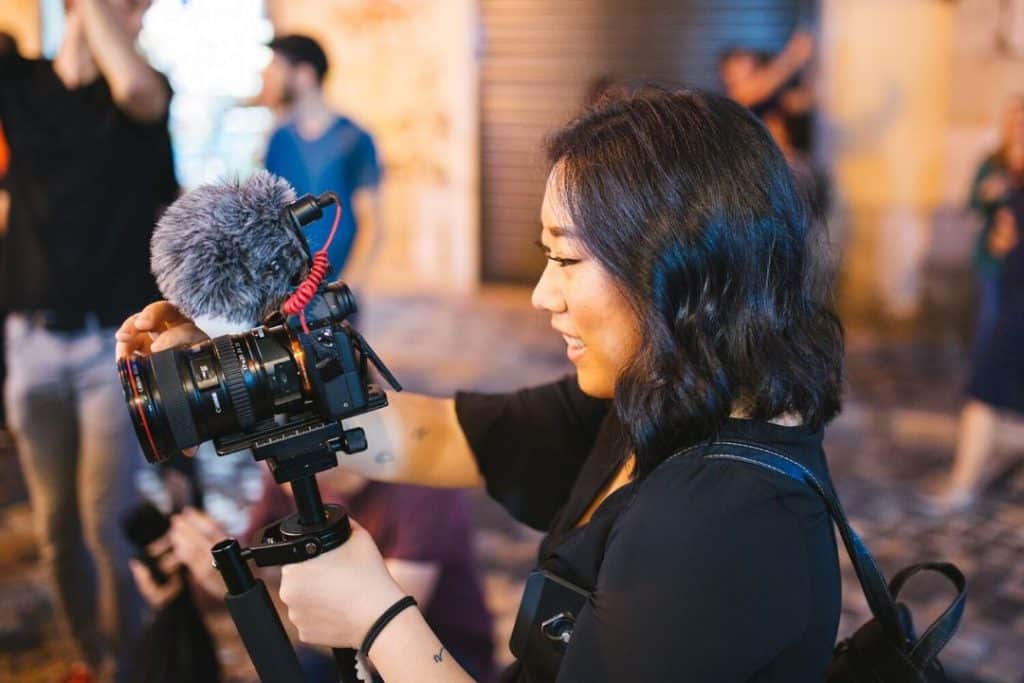
Lenses, huh?
They are complicated beasts that require math and a real understanding of what exactly you’re trying to capture.
For vloggers, that can be as simple as just your face, or the robot fighting sequence in your last trip to Japan.
Canon still, and I think forever will, reign supreme as the go-to camera provider for vlogging needs.
Because of this, it is important to understand what type of Canon lenses you need for vlogging.
If nothing else sticks in your brain after reading this article, try to remember the following:
- EF is better than EF-S. (If you have the camera for it)
- If you’ve got an APS-C camera, double all your lenses’ focal length.
- Smaller aperture number means more light.
- There is nothing wrong with buying a kit lens.
Of course everything is subjective and no one will arrest you if you don’t buy every single lens I’ve suggested (though my feelings will be hurt).
Are there any lenses I missed that you swear by as a vlogging necessity?
Do you think EF-S mounts are the future of the vlogging world?
Have you tried the tilt-shift lens yet?!
Let me know in the comments down below!

